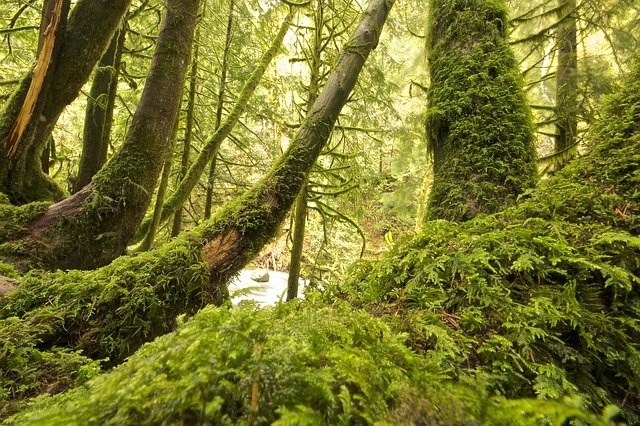
As a gardening enthusiast, it can be really frustrating when moss starts to appear in unwanted places. Knowing what moss is and where it comes from will help you maintain a moss free garden. So, if you're concerned by the amount of moss in your garden, we'll help you understand the problem and deal with it efficiently.
What is moss?
Moss is an unusual plant that doesn't have roots to anchor it into the ground. Instead, it grows in a mat of threads across damp surfaces and relies on the dispersion of its spores to reproduce. So, to answer the questions "where does moss come from?" - it comes from spores that are transported in the wind or in water.
Where does moss grow?
Moss favours dark, damp and shady areas where it does not have to compete with other plants. For this reason, you'll often see moss appearing in the cracks of your patio, in your guttering and along the top of damp soil.
You'll often see moss in cracks and crevices because they provide a protected microhabitat where the moss can thrive. Moss will grow pretty much anywhere if there is enough water available to support its growth.
What problems can moss cause?
Moss growing over the soil around your plants or in your lawn can cause some serious problems. The thick matted layer across the surface of the soil inhibits water and nutrients from reaching your plants and stop them growing.
It's very rare that moss kills plants that are already well established, but it can limit their growth and cause problems later down the line if it's left untreated.
So, to put it plainly, moss in your garden is likely to be a sign that there's a problem with your soil. The only way you'll be able to eradicate the moss completely is to remove it and treat the underlying problem.
READ MORE: Why is Moss Bad for Lawns?
Preventing moss from forming
If your goal is to prevent moss from forming in your garden from the get-go, then it's important that you monitor and control the amount of water and shade.
Large objects like water features, benches and greenhouses can cast shadows on your lawn and plants, thus limiting the amount of sunlight that that particular area gets. Sunlight is really important for controlling moss development because it encourages excess water to evaporate. So, if you can, remove any items that restrict sunlight in your garden.
Another way to you can prevent moss from forming is to keep your soil aerated. Compacted soil has a great way of retaining moisture while soil that's broken up allows water to drain away. If you don't have a proper aeration tool, you can easily break up your soil using a pitchfork or a shovel. If you notice areas in the soil where water pools, try adding topsoil to level the area out.
Our moss control services can help you get rid of unwanted moss. We can offer you a survey and a quote FREE of charge! Fill in the form below to get a moss control quote or give us a call on 029 2039 7554.
Read more:
